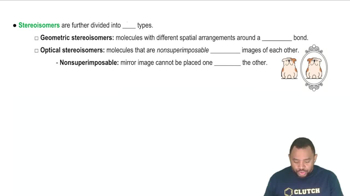Textbook Question
Write the molecular formula for a carbohydrate containing three carbons.
7
views
 Verified step by step guidance
Verified step by step guidance



Write the molecular formula for a carbohydrate containing three carbons.
What would be the molecular formula of a monosaccharide characterized as an aldopentose?
How are the following pairs of carbohydrates, shown in a Fischer projection, related to each other? Are they structural isomers, enantiomers, diastereomers, or epimers? Identify each as the d- or l-isomer.
(a) <IMAGE>
Identify the following carbohydrates as the α or ß anomer:
(a) <IMAGE>
Identify the following carbohydrates as the α or ß anomer:
(b) <IMAGE>
Draw the Fischer projection of the product of the oxidation of d-galactose at C1.